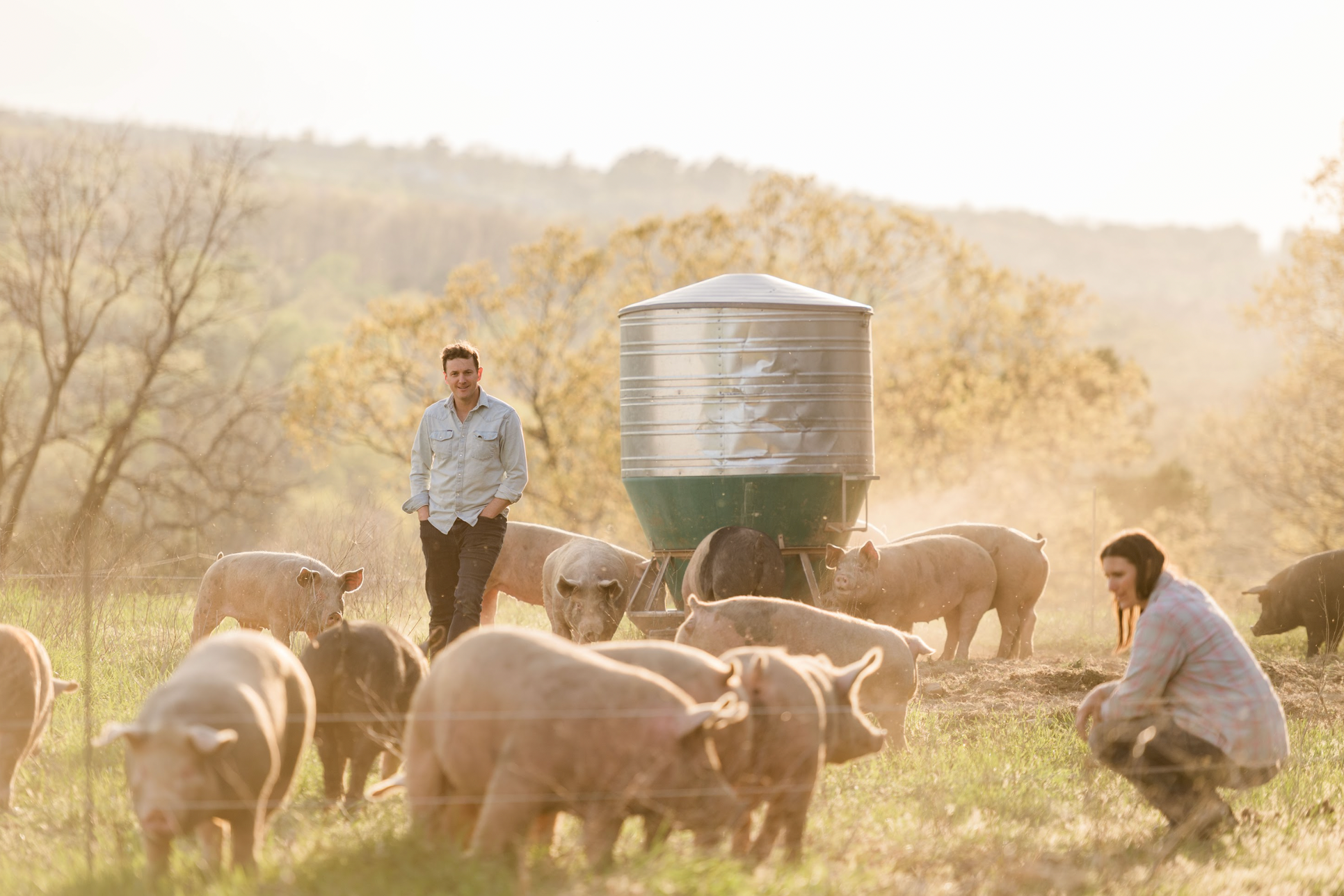Why Americans Turned Away from Pork, And Why It’s Time to Come Back

Conventional pork has a perception problem—and for good reason. In the last 50 years, pork has lost ground to beef and chicken in American kitchens, despite being the most widely consumed meat in the world. U.S. consumers have long had concerns about affordability, taste, and—most of all—how pork is raised.
Why is pork lagging behind beef and poultry?
-
Beef has cultural clout, especially in regions with ranching heritage. Beef feels like the most luxurious option, often taking center-stage at family dinners.
-
Chicken is cheap and often viewed as a healthy, easy go-to for quick nutritious meals.
-
Pork lacks tradition here—unlike countries with rich histories of curing, slow-roasting, and celebrating it.
-
And perhaps most importantly:
Industrial pork production is a disaster—for people, pigs, and the planet.
In North Carolina alone, over 9.7 million pigs produce more than 10 billion gallons of waste each year. On factory farms, this waste ends up in open-air “lagoons” filled with feces, urine, bacteria, and pig carcasses. These lagoons emit toxic gases and pose huge risks to public health and local ecosystems—especially during floods and storms.
The Grass Roots Way: Pasture-Raised, Sustainable Pork
At Grass Roots, we raise sustainable, humanely raised pork—the way it should be. Here's how we’re building a better future for pigs, people, and the planet:

Environmentally Responsible
-
No waste lagoons, ever. Our pigs live in small forested micro-herds, and any waste is naturally absorbed by the land as they move over it.
-
We rotate pastures often, mimicking wild behavior and eliminating pollution. Our pigs don’t stink! Visit one of our farms and smell the difference for yourself!
Humane, Hands-On Farming
-
Our pigs root, graze, nap, and explore—free from cages and confinement, to express their “pigness”.
-
In emergencies, we can safely move them. This is due to our farmers being so hands-on with each small herd that they raise. In contrast, industrial farms left 5,500 pigs to drown during Hurricane Florence.
Safe for Communities
-
Our farms are odor-free and neighbor-friendly.
-
Unlike industrial farms, we don’t use spray systems to eject pig waste into the environment.
Naturally Nutritious
-
We raise heritage breed pork (Duroc, Berkshire, Hampshire) for better health and flavor. These breeds thrive in forested and pastured settings, making their meat and fat healthier than those raised conventionally.
-
Our pork has 10x more omega-3s than conventional:
-
Pork chops: 481mg omega-3s per 100g
-
Ground pork: 650mg omega-3s per 100g
Ethically Raised Pigs
-
Pigs are intelligent, social animals. We give them the freedom and dignity they deserve. Respect for these amazing animals is demonstrated every day by the care our farmers take to assess their needs and make sure they have no bad days, from birth to harvest.

Why Pork Deserves a Spot on Your Plate:
It’s not just about how pork is raised—it’s about how delicious it can be. Pasture-raised pork is flavorful, juicy, and incredibly versatile. Whether you’re a weeknight meal planner or a weekend grill master, pastured-pork can do it all.
Delicious Ways to Cook Pasture-Raised Pork:
-
Bacon: Crispy, smoky, and naturally cured—perfect for breakfast or burgers or even to top your summer salads.
-
Pork chops: Tender and juicy when pan-seared or grilled. Try a herb marinade or a quick brine!
-
Ground pork: Use it in tacos, stir-fries, dumplings, or healthy lettuce wraps.
-
Sausage: Spice it up with chorizo or keep it classic with breakfast links.
-
Pork shoulder: Perfect for pulled pork sandwiches, tacos, or grain bowls.
-
Ribs: Whether smoked or oven-baked, ribs bring serious flavor and fun to the table.
Pro tip: Pasture-raised pork has more intramuscular fat (aka the good fat! aka flavor!)—so don’t overcook it like lean supermarket pork. Let it shine!
It's Time to Reimagine Pork
Forget the sad, pale factory-farm image of pork. Picture burly heritage hogs roaming forested pastures, nourishing the land, their lives full of movement and dignity.
This is pork worth eating.
It’s better for your health. Better for the planet. Better for the pigs.
So go ahead—make that bacon. Sear those chops. Build a better food system, one delicious bite at a time. Pork with intention.
Happy eating!



